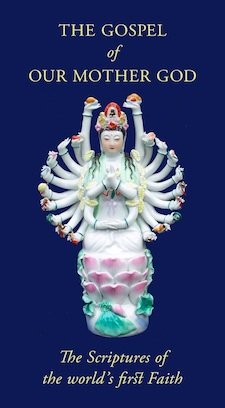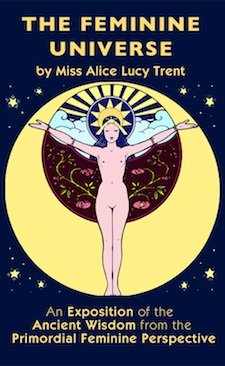Hymns to Our Lady
Maria-sama no Kokoro – Lady Mary's Heart
Many lovely hymns to Our Lady have been written over the centuries.
We are very happy to present here a video made by some honoured Aristasians of a Japanese hymn to the Immaculate Heart of Mary.
This sweetest of hymns to Our Lady likens Her heart to many things: the blue sky, the oak tree, the uguisu or "Japanese nightingale", the mountain-lily and the sapphire.
Here is the video itself. Afterward we shall make a few remarks on the wonderful symbolism and give the words of the song in Japanese and English.
Many lovely hymns to Our Lady have been written over the centuries.
We are very happy to present here a video made by some honoured Aristasians of a Japanese hymn to the Immaculate Heart of Mary.
This sweetest of hymns to Our Lady likens Her heart to many things: the blue sky, the oak tree, the uguisu or "Japanese nightingale", the mountain-lily and the sapphire.
Here is the video itself. Afterward we shall make a few remarks on the wonderful symbolism and give the words of the song in Japanese and English.
Now that you have heard it, we are sure you will agree that this is one of the sweetest of all hymns to Our Lady!
The symbolism of the words is charming and meaningful on an outward level: the beautiful canopy of the sky, like Our Lady's blue cloak; the strong, protecting oak tree; the harmonious singing bird; the pure lily; and the deep blue sapphire are all images of Our Lady's wonderful qualities.
From a Déanic point of view, these symbols have a remarkable consistency, which is no doubt why an Aristasian group were moved to make a video of it.
Each of the symbols belongs to Sai Thamë, the Angel, or Janya, of Harmony and Order. Sai Thamë's sacred colour is blue, her day of the week is Thursday and she is the Angel corresponding to the planet Jupiter. She is important because she rules the Golden Order of the universe – the Great Chain of Being. As such she may be seen as an emanation of the Daughter as Princess of the World, who is described in the Filianic Creed as "The Ruler of all the energies of creation". Sai Thamë especially rules music, since the Heavenly Order is a Great Harmony, known as the Music of the Spheres.
Thus, of all hymns to Our Lady, this one depicts Her especially in Her Thamë-aspect, as each of the symbols shows:
The blue canopy of the sky has, from the most ancient times, been recognised as a symbol of the Heavenly Order.The Oak Tree – the lightning-tree – is the tree of Sai Thamë.
The "Japanese nightingale” typifies harmony and music, the special province of Sai Thamë.
The Mountain Lily seems more purely a symbol of the Daughter. The Lily represents, of course, purity, and in the West is often used to represent the Daughter as opposed to the Rose of the Mother. However, the Lily is often interchangeable with the Iris, which, as a symbol of the rainbow-bridge between earth and heaven (even as the lightning joins earth and heaven), is a Thamic symbol.
The blue Sapphire, of course, is the Thamic jewel par excellence.
Of the many hymns to Our Lady, it is rare that one should concentrate so intensively on Thamic symbolism. So why should this be the case in a song specifically devoted to Our Lady's Heart?
The answer is simple. As explained in our page on The Immaculate Heart of Mary, the Divine Heart is the Source and Centre of all being. She who is at one with the Divine Heart is in harmony with all of Her creation.
As an ancient Scripture says "As Her universal music tunes the furthest spheres, so does it tune the beating of my heart".
Maria-sama no Kokoro : Lady Mary's Heart
Maria-sama no kokoro
Sore(h)wa aozora
Watashitachi (w)o tsutsumu
Hiroi aozora
Maria-sama’s heart
It is the blue sky
We are enfolded
By the wide blue sky.
Maria-sama no kokoro
Sore(h)wa kashi no ki
Watashitachi (w)o mamoru
Tsuyoi kashi no ki
Maria-sama’s heart
It is an oak tree
We are protected
By that mighty oak.
Maria-sama no kokoro
Sore(h)wa uguisu
Watashitachi to utau
mori no uguisu
Maria-sama’s heart
It is the uguisu ("Japanese nightingale")
We sing with
The woodland nightingale.
Maria-sama no kokoro
Sore(h)wa yamayuri
Watashitachi mo hoshii
Shiroi yamayuri
Maria-sama’s heart
It is a mountain-lily
We too desire
That white mountain lily.
Maria-sama no kokoro
Sore(h)wa safaia
Watashitachi (w)o kazaru
Hikaru safaia
Maria-sama’s heart
It is a sapphire
We are adorned by
That shining sapphire.
See also:
Choosing a Virgin Mary Statue: a guide for Devotees of Our Mother God
Mary Statues as Images of God the Mother: further important information on statues of Our Lady Mary.
Creation Myths and the Virgin Mary: What is a Creation Myth? Is it true? And how is Our Lady Mary connected with the primordial Creation Myth?
Mary and Eve: Reflections on the original Divine status of Eve as Creatrix, and the traditional idea of Mary as "the New Eve"
The Mother-God Hail Mary mp3: The Hail Mary "translated" for devotional use by children of Our Mother God. This Sermon, given at a Filanic Service, presents and explains the Mother-God Hail Mary.
Or return to The Blessed Virgin Mary Main Page
Send Questions or Comments on Hymns to Our Lady: Maria-sama no Kokoro
Go to top of page: Hymns to Our Lady: Maria-sama no Kokoro
Chapel of Our Mother God Homepage
All written material on this site is copyright. Should you wish to reproduce any portion please contact us for permission.
Facebook or Twitter
This section:
Devotional Practices
Shrines
- Shrines to Dea
- Virtual Shrine
- How to Make a Shrine
- Living Goddess Images
- Choosing a Virgin Mary Statue
- Mary Statues as Images of God
- Maria-sama no Kokoro
- Hail to the Princess: A Nativity Carol
- An Easter Hymn
- Maria Mantra: a Universal Invocation
- Inanna Lalitha Devotional Chant
- The Marianna Maria Chant
- The Great Compassion Mantra
- How to Pray the Rosary
- Rosary Prayers
- Rosary Meditations
- Nativity Rosary Meditations
- Mala Beads: The Chanting Rosary
- The Rosary of the East
Gospel of Our Mother God
The Gospel of Our Mother God is a collection of inspirational texts, prayers and daily inspiration for the Mother-Faith devotee or household.
The Feminine Universe
The Other Philosophy
Everything you have ever heard comes out of the patriarchal world-view. Its materialism, its religion, even its feminism. Here is the other way of seeing the world; the natural way: the way that everyone saw things before patriarchy and will again when patriarchy is long forgotten.

